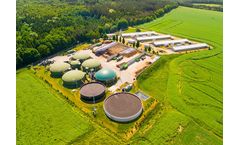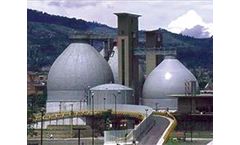Anaerobic Digestion Optimization Articles & Analysis
9 articles found
Anaerobic digestion is a biological process in which microorganisms break down organic matter without oxygen and transform them into end-products, including biogas, an energy-rich gas comprised of methane (CH4), carbon dioxide (CO2), and other trace amounts of gases. Anaerobic digestion can be summarized as a four-stage process (1) hydrolysis, (2) acidogenesis, (3) acetogenesis, and (4) ...
Now, Scientists are aiming to develop an environmentally friendly method to produce hydrogen from biomass by optimizing anaerobic digestion systems.1 Climate change, dwindling fuel resources and energy prices have spearheaded intensive efforts to detect and optimize alternative fuel options. ...
Location: Empresas Publicas, Columbia Background: Ecological Laboratories Inc. was contacted by Empresas Publicas to determine if bioaugmentation with MICROBE-LIFT® technology could assist in the operation of their anaerobic digesters. The facility consisted of two anaerobic digesters of 7,900 m3 each. The average flow rate was 1.8 m3 per second giving an average hydraulic retention time ...
Now, Scientists are aiming to develop an environmentally friendly method to produce hydrogen from biomass by optimizing anaerobic digestion systems.1 Climate change, dwindling fuel resources and energy prices have spearheaded intensive efforts to detect and optimize alternative fuel options. ...
Three previously published control strategies for anaerobic digestion were implemented in Simulink/Matlab using Anaerobic Digestion Model No. 1 (ADM1) to model the biological process. ...
The objective of the study was to identify the impact of co-digesting clarifier skimmings on the overall methane generation from the treatment plant and additional energy value of the increased methane production. Biogas production from co-digesting clarifier skimmings and sewage sludge in pilot-scale fed-batch mesophilic anaerobic digesters has been evaluated. The digester was fed with ...
New Zealand has over 1000 anaerobic waste stabilisation ponds treating wastewater from farms and industry. Traditional anaerobic ponds were not designed to optimise anaerobic digestion to produce biogas and are therefore uncovered, releasing biogas to the atmosphere, which can cause odour problems and contributes to GHG emissions. The biogas production and treatment performance of an anaerobic ...
The City and County of San Francisco completed a two-year pilot study of pre-treatment processes to mesophilic anaerobic digestion for improved biosolids stabilization and production of biosolids suitable for unrestricted reuse (class A biosolids). The results of this effort will help in the design of the new Solids Handling Facility (SHF) at the 11 m3/s Southeast Water Pollution Control Plant ...
With rising energy costs and increasing environmental pollution, this paper looks at how treatment of biological waste is emerging as a cost-effective solution towards both these problems.Keywords: anaerobic digestion, biological waste, environmental pollution, autohydrolysate, biogas, biochemical oxygen demand, BOD, chemical oxygen demand, COD, digestion, effluent, fatty acids, gas collector, ...







